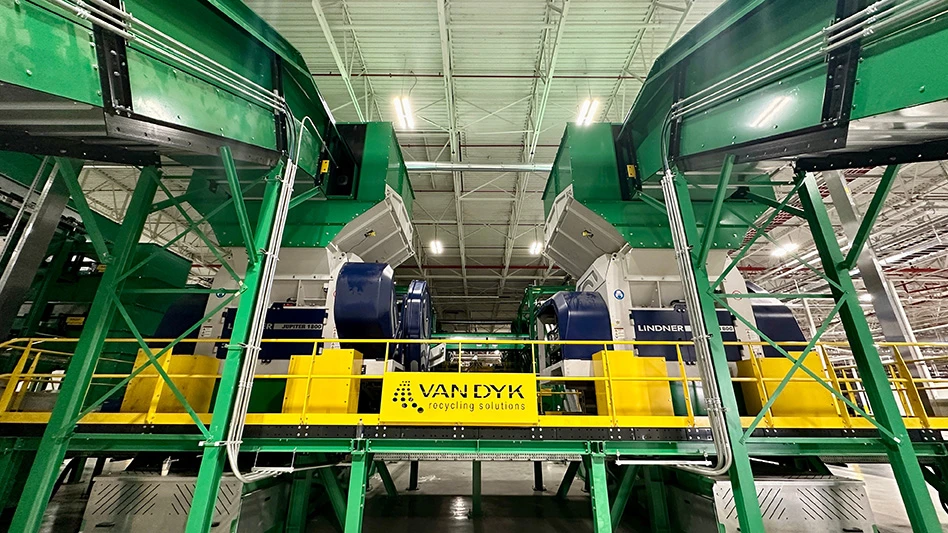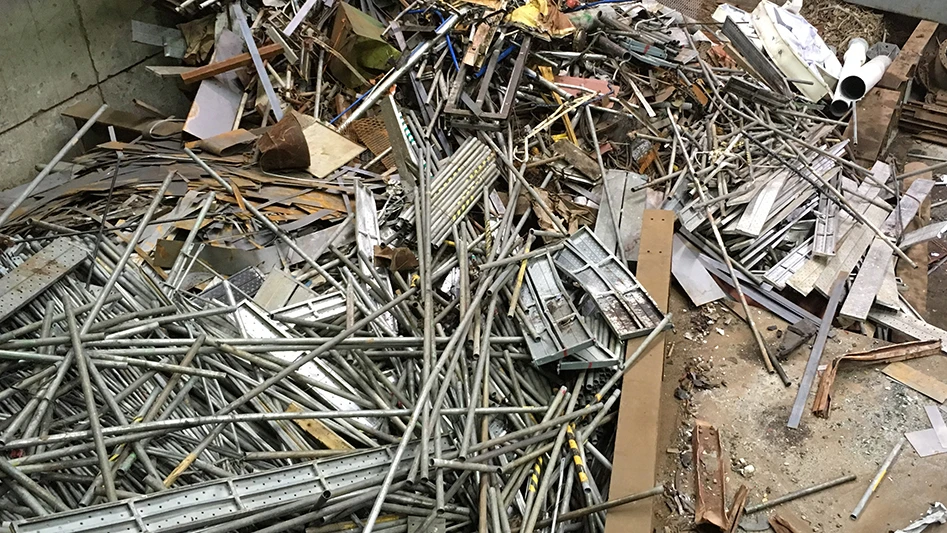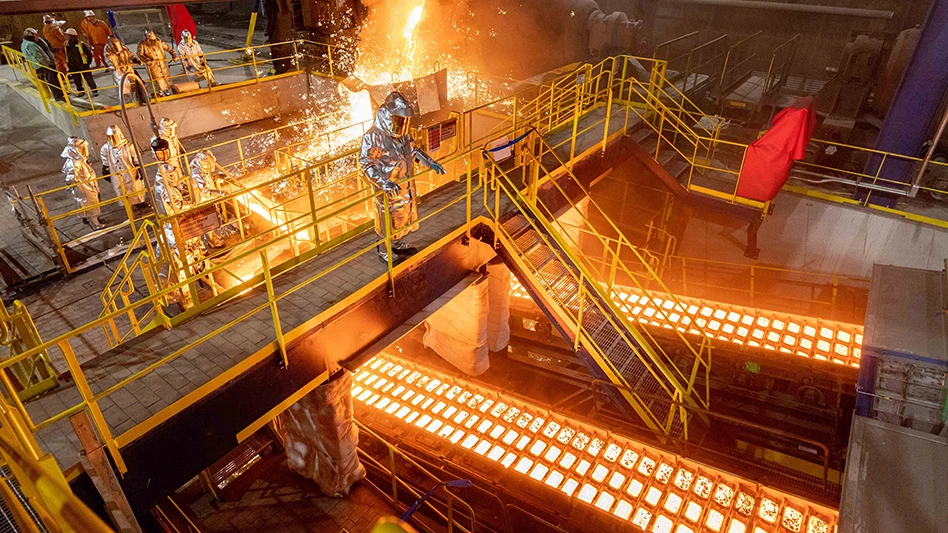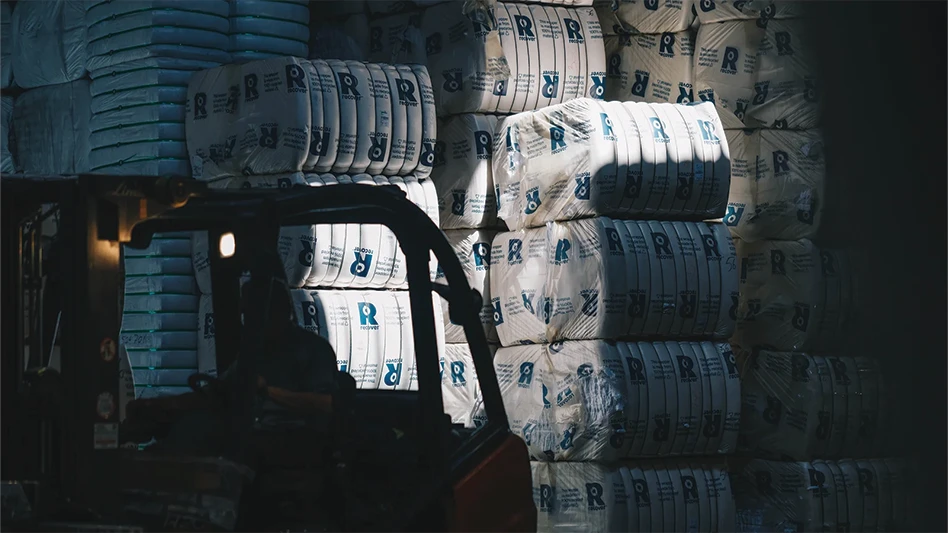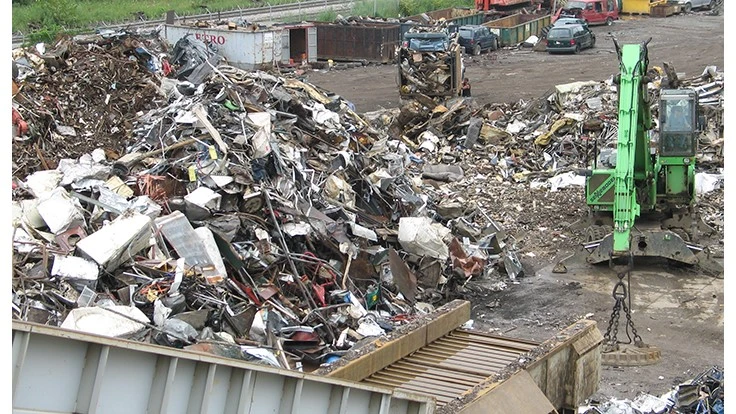
Photo by Recycling Today staff
Inflation has been a leading cause of concern for executives, investors, central banks and heads of household alike. In early May, the ferrous scrap market—considered by some a leading indicator—sent a counter-inflationary signal to the basic materials market.
After two months of sometimes sharp upward movement, buyers both in the domestic market and overseas showed an unwillingness to buy scrap at anything other than a lower price in early May.
The downward direction was predicted by several Recycling Today sources in mid- and late April, as they read the tea leaves regarding booming across-the-scale supplies combined with a pullback by overseas buyers.
As expected, domestic mills—who largely have healthy order books—saw it as an opportunity to offer lower bids to find sellers willing to ship material at rates around $75 per ton lower in early May compared with April.
A scrap processor in the Southeast says, “April saw good supply and weaker demand, especially for cut grades, and a weaker export market.” Commenting before the May buying period had started, he remarked, “We feel the market will be down $40 to $50 per ton next month on obsoletes and level on primes.”
By May 10, Argus Media was reporting bids on all three main grades of scrap (prime, shredded and heavy melting steel, or HMS) down from $75 per ton to as much as $100 in large Midwest markets. Not all processors wished to sell at that price, says Argus.
Price tracking by Davis Index revealed similar trends. By May 11, the business information service was reporting that processors had “gradually accepted these lower-priced settlements due to ample supply and waning exports.”
The export market was affected in part by Labor Day or May Day holidays in several countries that coincided with the Eid (end of Ramadan) holiday in Turkey and several other major export destinations.
Postholiday, though, buyers in Turkey remained largely absent from the market, or they offered prices of at least $30 per ton compared with April pricing, according to Davis Index.
The Turkish absence in the market could show mills there have been able to again source slabs, billets and pig iron supplies that had been disrupted by Russia’s invasion of Ukraine and subsequent sanctions.
“The majority of free, or open market pig iron produced comes from Ukraine and Russia,” says the recycler in the Southeast. “Many rolling mills [globally] also counted on those two countries to provide billet and finished steel. This has shifted demand on Turkey and other Mediterranean steel producers in a positive way.”
Heading into the summer, U.S. scrap processors and exporters will be anxious to see if the early May lack in demand from Turkey was tied to the end of this temporary shift in metallics movements; to a reluctance by Turkish mills to buy U.S. scrap at its peak price; or to an economic slowdown in the Middle East and Central Asian region served by Turkish mills.
Steel output in the United States seems to have lost its forward momentum, based on figures gathered by the Washington-based American Iron & Steel Institute (AISI).
In the first full week of May, steel production of 1.777 million tons was down 3.1 percent from the same week in 2021. Compared with the previous week, output increased, but by just 0.1 percent.
Automotive sales figures indicate that steel-consuming sector has stalled somewhat. Construction statistics continue to point to an active market there, although trade groups continue to worry about rising materials and labor costs.
Globally, steel output in the more than 60 nations that report to Brussels-based World Steel Association (Worldsteel) amounted to 161 million metric tons this March 2022, representing a 5.8 percent decrease compared with March 2021 production.
Nine of the world’s 10 largest steel-producing nations made less steel in March of this year compared with last March, according to the association. Offering better news for scrap processors is that U.S. output was down just. 0.4 percent and India, a buyer of U.S. scrap, was the sole outlier with a 4.4 percent rise in output.
Worldsteel also released its “Short Range Outlook” for 2022 and 2023 in April. Despite the March declines, it forecasts steel demand will grow by 0.4 percent this year, reaching 1.84 billion metric tons in output.
For 2023, the group says the steel sector will see additional growth of 2.2 percent, reaching 1.88 billion metric tons in output. However, Worldsteel says the war in Ukraine creates a high degree of uncertainty.
China doesn’t buy much ferrous scrap from the U.S., but the nation’s drop in steel output this year has become noteworthy, in part because it lately has made half the world’s steel and also because what happens with its economy will create global ripple effects.
For this March, the nation’s trade association reported a double-digit drop in year-to-year output, producing 10.2 percent less steel in March 2022 compared with one year ago. That follows an 11.2 percent year-on-year decline reported for February—and those figures occurred before the severe lockdown in Shanghai.
Latest from Recycling Today
- Cleveland-Cliffs adds board member
- Blizzard interrupts collection routes
- Biden officially blocks Nippon Steel’s acquisition of US Steel
- Highland Sanitation awarded solid waste and recycling contract in Wanamingo, Minnesota
- Ecobat gathers support for California permit renewal
- RecyclX platform designed to provide materials transparency
- Turkish mills sampled wide scrap market in 2024
- GLE Scrap Metal acquires interest in Mallin Cos.
